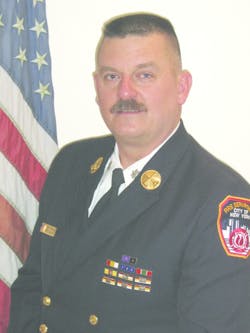If you are an engine company firefighter, you never want to hear or say the most dreaded words in the engine company dictionary – “short stretch.” This column describes exactly what a short stretch is and then discusses how this problem can be avoided and solved.
A short stretch is when an engine company does not have enough hose to reach the seat of the fire; hence the term “short stretch.” There are several reasons why this can happen and corresponding solutions as well. Let’s first talk about how to avoid a short stretch. This is always – yes, always – the better way to handle this situation. Knowing what you are doing and how to do it correctly is always your best choice. Organizations like NASA and the Marine Corps are pretty good at doing this and we should be too.
Question: How do you know how much hose to stretch?
Answer: Figure it out!
If your attack hoselines are pre-connects, you probably have a few choices. If you have two or three or more pre-connected attack lines, I hope they are of different lengths. Depending on your response area, you may have a three-length, a four-length and a five-length pre-connect to choose from.
Next, you need to know how far the fire is from the backstep. Visually figure out the distance to the front door. Estimate the distance to the stairway, if the fire is above the first floor; the number of floors up from entry level; and the distance to the fire area from the top of the stairs.
Once you total that distance and add a length for the fire floor, you select the line closest to that distance. It can be longer, but can never be shorter. If you don’t have pre-connects, or if you have a dead load of hose in your hosebed you can pull the exact number of lengths you have figured out. Both of these tactics will most often result in enough hose to reach and extinguish the fire.
What if you get to the fire floor and you don’t have enough hose to make the fire room? Obviously, the engine officer must notify the engineer or pump operator that you have “short stretched.” Most of the work that has to be done to correct this problem will be performed by the pump operator outside at the apparatus.
There are several actions we do NOT want to take to correct this problem. First, never take a length of hose from one of the other pre-connected hoselines that has not yet been stretched. The reason for this is simple. We have just short stretched, so we have already compromised our initial fire attack. Therefore, there is a great possibility that we may need a second or even a third hoseline to help us fight the fire. If we take a length from another hoseline, it cannot be used to help back up the first line or go to the floor above.
The second action we don’t want to take is to try to solve this problem at the nozzle end of this attack hoseline. The nozzle team and officer are in or near the hazard zone and should hold their position or move to a safe area until water is supplied to their hoseline.
We must look at the pump operator’s actions to solve our problem, but before we go through that operation, let’s look at what equipment and hose you will need to get this job done. Since we are not going to use hose from another pre-connect, we should have a length or two of hose ready for this specific situation. Double roll two lengths of hose, with both couplings out on top. These two lengths should be stored at or near the pump panel. After being informed of the short stretch, the pump operator will quickly pull those lengths out. While holding the two couplings in one hand, the hose is thrown out so it unrolls away from where the operator is standing. With both couplings still in the operator’s hands, and without having to run out to the end of the 50-foot length to retrieve the other coupling, the pump operator simply breaks the closest coupling and quickly inserts the length of hose being held. If two lengths are needed, insert them in the same manner. Once the new length is inserted, the pump operator can notify the officer via radio and the crew can pull the additional hose into the building and then call for water.
This is a basic and simple tactic for solving a problem that can result in losing the entire building or a threatened exposure. Try it, you’ll like it!
Chief Salka takes a candid look at news and events impacting the fire service in his blog “The Fire Scene” at http://www.firehouse.com/blogs/the-fire-scene.






